Blister Beetles in Alfalfa
Circular 536
Revised by Jane Breen Pierce
College of Agricultural, Consumer and Environmental Sciences, New Mexico State University
Author: Extension Entomologist, Department of Extension Plant Sciences, New Mexico State University. ( Print friendly PDF )
This publication provides information on the veterinary and agronomic importance, distinguishing features, biology, distribution, and control of blister beetles. Recommendations for the purchase and use of alfalfa hay by horse owners and other livestock owners are also provided.
Veterinary Significance of Blister Beetles
The common name for blister beetles comes from the irritating reaction the beetle’s body fluids cause on animal skin or delicate membranes. These fluids contain cantharidin, a potent blistering agent that is present in varying amounts in most blister beetle species. Fluids are released when the beetle is crushed or handled roughly. Cantharidin is a stable chemical and a long-term health threat to nearly all livestock (particularly horses) that are fed contaminated hay. Storing infested hay does not significantly reduce the amount of cantharidin in the hay.
Research reports indicate cantharidin toxosis can be induced in dairy and beef cattle, goats, and sheep; other reports include rabbits, hedgehogs, rats, mice, and dogs. Cases of human death have also been reported. However, horses appear to be more susceptible than other livestock to the toxic effects of this potent chemical.
Studies of cantharidin poisoning in horses show that symptoms such as colic cannot, by themselves, confirm poisoning. The best diagnostic method appears to be chemical analysis of urine, digested food from the upper gastrointestinal tract, and possibly liver tissue. Usually, a high-pressure liquid chromatographic method is used to determine the presence and amount of cantharidin in these samples. However, if an animal ingests a large number of beetles, a trained person can confirm the presence of the beetles by direct examination of digested food. Other studies indicate that blood analysis of horses experimentally fed lethal levels of cantharidin showed heavily depressed levels of calcium and magnesium in the blood. Post-mortem examination usually shows blistering of the mouth, esophagus, stomach, and bladder. Death can occur 24 hours after a heavy dose.
Laboratory studies have been conducted to determine the amount of cantharidin contained in various species of blister beetles. Reports on beetles in several genera indicate cantharidin content varying from 1 to 11.3% of their dry weight. Studies on a common blister beetle species indicate widely varying amounts of cantharidin in individual insects of the same species from less than 1% to more than 5% dry weight. With such a variation in cantharidin content of beetles within the same species, it is difficult to determine the number of beetles that could be a lethal dose. The cause of this variation is unknown, but it partially depends on the sex of the beetles (males have more than females), time of year, and food source.
The high variability in cantharidin content partially explains the wide range in numbers of beetles reported to cause death in horses. A few beetles or as many as 200 beetles have been reported as a lethal dose. Doses of cantharidin used to experimentally cause death in horses range from 0.45 to 1 mg per kg (2.2 lb) of body weight. The highest reported cantharidin content—of the striped blister beetle—is 5.4% of the beetle’s dry weight. Calculations based on these figures for a 1,000-lb horse indicate a fatal dose would be 81 to 128 beetles of one of the most common blister beetles found in New Mexico, a small Epicauta species, gray in color, with small black dots, especially on the wing covers (elytra).
If the cantharidin content of the beetles is known, information in Table 1 can be used to determine the approximate number of beetles that can kill an average-sized horse. For example, if the beetle contains 3 mg of cantharidin and the horse weighs 1,000 lb, 161 beetles is an average lethal dose, based on the threshold of 1 mg/2.2 lb of body weight.
Table 1. Estimated Number of Beetles for a Lethal (1 mg/kg) Dose of Cantharidin
| Beetle Cantharidi Content (mg) |
Horse Weight (lb) | ||
| 275 | 550 | 1,000 | |
| 1 | 125 | 250 | 455 |
| 2 | 63 | 125 | 244 |
| 3 | 41 | 83 | 161 |
| 4 | 31 | 63 | 122 |
| 5 | 25 | 50 | 97 |
| Adapted from Campinera et al. (1985) | |||
Distinguishing Features of Adult Blister Beetles
Blister beetles in the Southwest vary considerably in size and shape. General characteristics include antennae that are thread-like and are composed of a long series of similar, gradually tapering segments. Although visible from above, the compound eyes do not bulge, but follow the contours of the head. The head is often bent down. Legs are relatively long, and the claws on each tarsus (similar to feet) often have extra blades, teeth, or spines (Figure 1; use a 10X hand lens to see this feature on an actual beetle). The tarsi have five segments on the first and second pairs of legs (Figure 2A), but have four segments on the hind legs (Figure 2B). Six abdominal plates are visible on the underside of the insect.
Two features are fairly consistent for most species of blister beetles:
- The first portion of the thorax, just behind the head, is narrower than either the head or wing covers (Figure 3).
- The first pair of wings is soft and flexible. They may be extremely short and scale-like ( Meloe spp., Figure 3, and Megetra spp., Figure 4), narrow and elongated ( Epicauta spp., Figure 5, and Pyrota spp., Figure 6), or inflated, but covering the entire abdomen ( Cysteodemus spp., Figure 7). In Epicauta spp., the rounded tips of this first pair of wings form a sideways “3” where they come together at the tip of the abdomen.
Blister beetles range from 1/2 to 1 1/2 inches long. Primary body colors include black, brown, or gray; different species have spots or stripes of yellow, red, brown, orange, black, or white (Figure 8). A few species are metallic green or turquoise.
Blister beetles are frequently confused with many similar-looking beetles such as tamarisk leaf beetles, southern corn rootworms, and caterpillar hunter beetles (Figure 9). Care should be taken to properly identify the insect before initiating control practices.

Figure 1. Close-up of tarsal claws from a blister beetle. The paired claws are each divided into two blades. (Steven Valley, Oregon Department of Agriculture, Bugwood.org)

Figure 2A. The first and second pairs of legs have five tarsal segments. (Steven Valley, Oregon Department of Agriculture, Bugwood.org)

Figure 2B. The hind legs have four tarsal segments. (Steven Valley, Oregon Department of Agriculture, Bugwood.org)

Figure 3. Meloe sp., a black blister beetle with very short wings. (Illustration courtesy of Sandya Athigiman. Used with permission.)

Figure 4. Megetra sp., a black and orange, short-winged beetle commonly seen in desert areas in late summer. (Illustration courtesy of Sandya Athigiman. Used with permission.)

Figure 5. Epicauta sp., a narrow, long-winged blister beetle. These are widely distributed; different species are solid colors or marked with tiny black spots. (Illustration courtesy of Sandya Athigiman. Used with permission.)

Figure 6. Pyrota sp., another narrow, long-winged blister beetle. P. akhurstiana is about 1 in. long, and is black with narrow red stripes on the wing edges. Other species in this group are yellowish with moderately large brown or black spots. (Illustration courtesy of Sandya Athigiman. Used with permission.)

Figure 7. Cysteodemus sp. is a metallic blue-black blister beetle commonly seen in desert areas. The wing covers appear inflated and cover the entire abdomen. (Photograph courtesy of Patricia Monk. Illustration courtesy of Sandya Athigiman. Used with permission.)
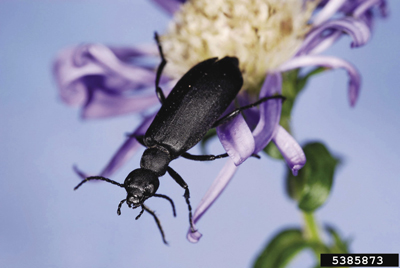
Figure 8A. Adult black blister beetle, Epicauta pensylvanica. (Joseph Berger, Bugwood.org)
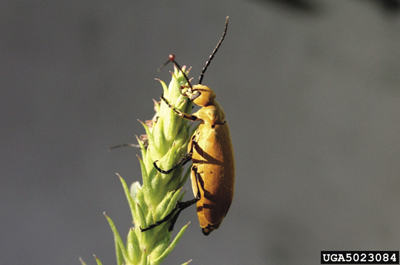
Figure 8B. Adult immaculate blister beetle, Epicauta immaculata. (Whitney Cranshaw, Colorado State University, Bugwood.org)
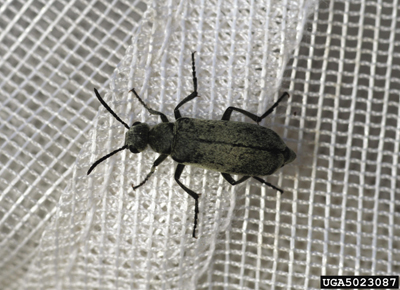
Figure 8C. Adult blister beetle, Epicauta sericans. (Whitney Cranshaw, Colorado State University, Bugwood.org)
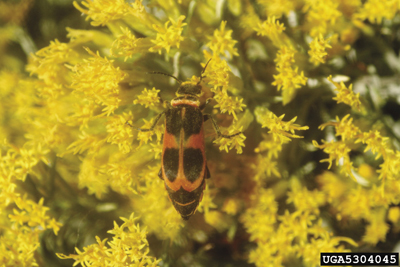
Figure 8D. Adult blister beetle, Epicauta stuarti. (Whitney Cranshaw, Colorado State University, Bugwood.org)
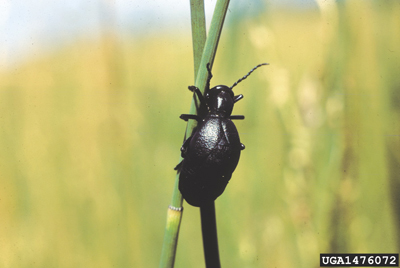
Figure 8E. Adult blister beetle, Meloe sp. (Howard Ensign Evans, Colorado State University, Bugwood.org)
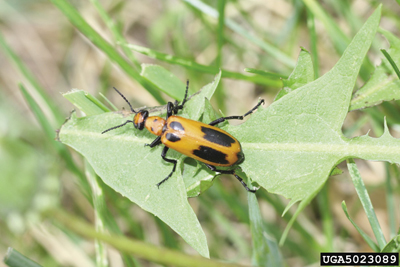
Figure 8F. Adult blister beetle, Pyrota insulata. (Whitney Cranshaw, Colorado State University, Bugwood.org)
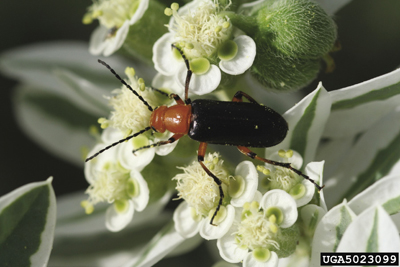
Figure 8G. Adult blister beetle, Zonitis atripennis. (Whitney Cranshaw, Colorado State University, Bugwood.org)

Figure 8H. Adult blister beetle, Zonitis sayi. (Whitney Cranshaw, Colorado State University, Bugwood.org)

Figure 9. Many insects can have a similar appearance and be confused with blister beetles. Shown here are (left to right) Epicauta sp., a common blister beetle in New Mexico; tamarisk leaf beetle; southern corn rootworm; and caterpillar hunter beetle. Illustrations are not drawn to scale. (Illustrations courtesy of Sandya Athigiman. Used with permission.)
Biology
Blister beetle eggs are usually laid in the soil during summer. The first-stage larvae of many species of Epicauta are active, long-legged insects (called triungulin larvae) that forage for grasshopper eggs. Young larvae of other blister beetles lurk in flowers. There they hitch rides on visiting bees and are carried back to nests where they can feed on bee eggs and stored food.
Whether they feed on grasshopper egg pods or infest bee nests, older blister beetle larvae become increasingly sedentary as they molt and mature (Figure 10). They overwinter as mature larvae, pupate in spring, and usually emerge as adult beetles in early summer.
In New Mexico, adult blister beetles usually emerge from the soil about mid-May and begin to search for food and mates. Dates are difficult to predict because emergence depends on temperature. Adults feed on plant materials, particularly flowers and foliage of such plants as alfalfa, carelessweed (pigweed/amaranth), puncturevine (goathead), peanuts, soybeans, and many other species of plants, both wild and domestic.

Figure 10. Typical lifecycle of an Epicauta sp. blister beetle. (Source: Sorensen and Baker, 1983)
Distribution
There are more than 300 blister beetle species in the continental United States. New Mexico has at least 28 species in eight genera; some that are found in alfalfa in New Mexico are shown in Figures 8A through 8H. Some blister beetle species are gregarious, congregating in large numbers, especially near field margins. Livestock poisoning cases are probably a result of baling parts of these swarms into alfalfa hay. It is unlikely that individual beetles will fatally poison livestock. New Mexico is fortunate that swarms of blister beetles are not very common and are the exception rather than the rule.
Although the larvae of blister beetles parasitize bees or feed on egg masses of other insects such as grasshoppers, adult blister beetles feed principally on various plant flowers and foliage. As the beetles’ primary weedy hosts mature and dry, beetles can enter lush alfalfa fields. Data from New Mexico State University Cooperative Extension Service indicate blister beetles are found sporadically in alfalfa from June through August, usually in low numbers. However, blister beetle swarms have been reported in isolated alfalfa fields in several counties in New Mexico as early as May and as late as October, requiring constant grower vigilance.
Recommendations for Control of Blister Beetles
Alfalfa fields should be scouted regularly for blister beetles from early spring through the end of the growing season. Correct identification is essential because blister beetles can be confused with many other beetles (Figure 9). For help with identification, collect a sample of the insects and take them to your county Extension agent ( https://aces.nmsu.edu/county/).
The importance of scouting alfalfa fields cannot be overemphasized. Through sampling, heavily infested fields can be detected and treated before cutting. However, as an additional precaution, fields should be surveyed after chemical treatment just before cutting to ensure beetle-free hay. Also, during cutting an alert operator can avoid cutting in areas where beetles are high in number, especially if swarms are present. Observations indicate that live beetles or beetles killed by insecticides do not remain in the cut hay; instead they fall to the ground where they cannot be picked up by the bailer. Most beetles in baled hay were probably killed as they went through the harvester. Differences in beetle kill rates may be found among types of harvesters and may be related to the type and setting of the crimper. Hay raked before baling (as is commonly done for large bales) may allow more dead beetles to fall to the ground, reducing the number of beetles in the finished product.
Cultural Control Recommendations for Alfalfa Producers
- Cut alfalfa at 10% or less bloom. This lessens the chances for field invasion by blister beetles because they are attracted to flowering plants.
- Control primary weeds in and around alfalfa fields. This reduces the likelihood of blister beetles establishing themselves along field margins and then migrating into alfalfa fields.
- Control grasshoppers with chemical or cultural methods, and control grassy weeds preferred by grasshoppers. This can reduce the numbers of both grasshoppers and blister beetles in and around alfalfa fields.
- Sample fields just prior to cutting, and avoid cutting any areas infested with large numbers or swarms of beetles. Beetles are generally more numerous on the side of fields nearest to rangeland.
Blister beetle-infested hay that has been bailed should be destroyed by burning or burying. Do not sell or feed blister beetle-infested hay to any livestock. The New Mexico alfalfa hay market is at risk when blister beetle poisonings occur.
Chemical Control Recommendations for Alfalfa Producers (Check NMDA labels)
Limited insecticide screening has been done for blister beetles in New Mexico. If these pests are found before cutting, one of the following treatments may be used:
- Sevin XLR Plus, 1/2 to 1 quart/acre
- Sevin 4F, 1/2 to 1 quart/acre
Sevin (carbaryl) is highly toxic to honeybees. Before applying Sevin, warn beekeepers to relocate hives beyond the bee flight range until one week after application, or take other equally effective precautions. The prescribed waiting period for cutting after using Sevin at recommended rates on alfalfa is seven days. Scout treated fields again for blister beetles at least once before cutting. - Warrior, 2.56 to 3.84 oz/acre
- Silencer, 2.56 to 3.84 oz/acre
- Proaxis, 2.56 to 3.84 oz/acre
- Cobalt Advanced, 12 to 15 oz/acre
Several other products are being tested for blister beetle control in alfalfa. Consult your county Extension agent for the latest information on insecticides registered in alfalfa for blister beetle control. It is the users’ responsibility to read all pesticide labels carefully and to follow all instructions on application, safety, and other restrictions.
Recommendations For Purchase and Use of Alfalfa by Horse Owners
Horse owners can avoid some problems with blister beetles by considering the following:
- Buy alfalfa hay from a reputable dealer or grower. In the latter case, give preference to alfalfa hay from fields that are scouted regularly as part of an integrated pest management (IPM) program.
- Cuttings of New Mexico alfalfa made before mid-May and after late August are the least likely to contain blister beetles.
- Inspect alfalfa hay for blister beetles as it is removed from the bale. Do not feed infested material to livestock, regardless of how long the hay has been stored. Most hay swathers have crimpers to crush fresh alfalfa stems so the hay cures faster. This makes detection of blister beetle bodies or parts almost impossible because the blister beetles can be crushed beyond recognition. Thorough inspection can take several hours per bale of hay.
- Do not use blister beetle-infested hay to feed to other livestock. It should be destroyed by burning or burying.
Sources
Bahme, A.J. 1968. Cantharides toxicosis in the equine. Southwestern Veterinarian, 147–148.
Balduf, W.V. 1935. The bionomics of entomophagous Coleoptera [1969 reprint]. Hampton, Middlesex, England: E.W. Casey Ltd.
Beasley, V.R., G.A. Wolf, D.C. Fischer, A.C. Ray, and W.C. Edwards. 1983. Cantharidin toxicosis in horses. Journal of the American Veterinary Medical Association, 182, 283–284.
Burke, C. 1985. The beetle in the haystack. The American Quarter Horse Journal, 136–141.
Capinera, J.L., D.R. Gardener, and F.R. Stermitz. 1985. Cantharidin levels in blister beetles (Coleoptera: Meloidae) associated with alfalfa in Colorado. Journal of Economic Entomology, 78, 1052–1055.
Coppock, S. 1981. Blister beetle problems in Oklahoma alfalfa. Stillwater: Oklahoma State University Cooperative Extension Service.
Craven, J.D., and A. Polak. 1954. Cantharidin poisoning. British Medical Journal, 2, 1386–1388.
Dunlap, M.J. 1983. Blister beetles: Russian roulette in alfalfa hay. Western Horseman, 7, 22–24.
Kinney, K.K., F.B. Peairs, and A.M. Swinker. 2010. Blister beetles in forage crops [Publication No. 5.524]. Fort Collins: Colorado State University Extension Service.
Lane, T.J. 1983. Blister beetle poisoning in horses. The Florida Horse, 25, 1846–1847.
MacKay, R.J., and P. Wollenman. 1981. An outbreak of blister beetle poisoning in horses in Florida. Florida Veterinary Journal, 10, 11–13.
Moore, R.W. 1963. Cantharides poisoning in a horse. Southwestern Veterinarian, 961–962.
Nickolls, L.C., and D. Teare. 1954. Poisoning by cantharidin. British Medical Journal, 2, 1384–1386.
Oehme, F.W. 1981. Blister beetles: Equine killers found in horse-bound hay. Kansas Horseman, 6–8.
Panciera, R.J. 1972. Cantharidin (blister beetle) poisoning. In E.J. Catcott and J.F. Smithcors (Eds.), Equine Medicine and Surgery, 2nd ed. (pp. 224–225). Wheaton, IL: American Veterinary Publications.
Pinto, J.D., and R.B. Selander. 1970. The bionomics of blister beetles of the genus Meloe and a classification of the new world species [Biological Monograph 42]. Urbana: University of Illinois Press.
Ray, A.C., S.H. Tamulinas, and J.C. Reagor. 1979. High pressure liquid chromatographic determination of cantharidin, using a derivatization method in specimens from animals acutely poisoned by ingestion of blister beetles, Epicauta lemniscata. American Journal of Veterinary Research, 40, 498–504.
Ray, A.C., L.O. Post, and J.C. Reagor. 1980. GC/MS confirmation of cantharidin toxicosis due to ingestion of blister beetles. Veterinary and Human Toxicology, 22, 398–399.
Ray, A.C., L.O. Post, J.M. Hurst, W.C. Edwards, J.C. Edwards, and J.C. Reagor. 1980. Evaluation of an analytical method for the diagnosis of cantharidin toxicosis due to ingestion of blister beetles ( Epicauta lemniscata) by horses and sheep. American Journal of Veterinary Research, 41, 932–933.
Rollins, J.B. 1985. A practitioner case report: Blister beetle poisoning in horses. Equine Practice, 7, 6–8.
Schoeb, T.R., and R.J. Panciera. 1978. Blister beetle poisoning in horses. Journal of the American Veterinary Medical Association, 173, 75–77.
Schoeb, T.R., and R.J. Panciera. 1979. Pathology of blister beetles ( Epicauta) poisoning in horses. Veterinary Pathology, 16, 18–31.
Scoggins, R.D. 1981. Blister beetles. Equine Professional Topics, Veterinary Continuing Education, Cooperative Extension Service, 7, 24–27.
Scott, H.G. 1962. Blister beetle dermatitis produced by Epicauta cinera (Coleoptera: Meloidae). Journal of Economic Entomology, 55, 145–146.
Shawley, R.V., and L.L. Roif, Jr. 1984. Experimental cantharidiasis in the horse. American Journal of Veterinary Research, 45, 2261–2266.
Shawley, R., S. Coppock, and L.M. Rommann. 1982. Blister beetles and alfalfa. Stillwater: Oklahoma State Cooperative Extension Service.
Sierra, J.R., W.D. Woggon, and H. Schmid. 1976. Transfer of cantharidin during copulation from adult male to the female (Spanish flies). Experientia, 32, 142–144.
Sippel, W.L. 1976. Blister beetle poisoning. Cattleman, 63, 208–210.
Snead, J.S., and J. Alcock. 1985. Aggregation formation and assortative mating in two Meloid beetles. Evolution, 39, 1123–1131.
Sorensen, A., and J.R. Baker (Eds.). 1983. Insect and related pests of vegetables. Raleigh: North Carolina Agricultural Extension Service.
Wertelecki, W., T.J. Vietti, and P. Kulapongs. 1967. Cantharidin poisoning from ingestion of a “blister beetle.” Pediatrics, 39, 287–289.
For Further Reading
Circular 678: Poisonous Plants of New Mexico Rangelands
B-710: Russian Knapweed and Yellow Star Thistle Poisoning of Horses
B-712: Oleander Poisoning of Horses
B-713: Locoweed Poisoning of Horses
|
Original author: Charles R. Ward, Extension entomologist. |

J. Breen Pierce is a research and Extension entomologist at the NMSU Agricultural Science Center in Artesia. Her program focuses on integrated pest management of insect pests of alfalfa, pecan, and cotton, including biological control of alfalfa weevil and pecan nut casebearer, development of economic thresholds, and variation in plant resistance.
The pesticide recommendations in this publication are provided only as a guide. The authors and New Mexico State University assume no liability resulting from their use. Please be aware that pesticide labels and registration can change at any time; by law, it is the applicator’s responsibility to use pesticides ONLY according to the directions on the current label. Use pesticides selectively and carefully and follow recommended procedures for the safe storage and disposal of surplus pesticides and containers.
To find more resources for your business, home, or family, visit the College of Agricultural, Consumer and Environmental Sciences on the World Wide Web at pubs.nmsu.edu
Contents of publications may be freely reproduced for educational purposes. All other rights reserved. For permission to use publications for other purposes, contact pubs@nmsu.edu or the authors listed on the publication.
New Mexico State University is an equal opportunity/affirmative action employer and educator. NMSU and the U.S. Department of Agriculture cooperating.
Revised November 2014


